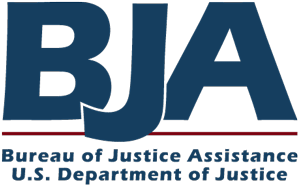- Home
- Reentry
- Part1
- Personal And Community Transformation
- Family And Prosocial Networks
Building Second Chances: Tools for Local Reentry Coalitions
This toolkit is designed for local city, county, and community leaders who want to play an active role in improving reentry policy, practice, and outcomes. Within, you will find user-friendly references to seminal publications, research findings, and noteworthy examples of the foundational knowledge needed to design new reentry strategies and reinvigorate existing ones.
Promote connections to family and prosocial networks ![]()
Social ties are another aspect of life that is diminished by incarceration but vital to success after release. This part of the toolkit will help you involve “family”—which can include people beyond blood relatives for many individuals and communities—to promote connections and prosocial networks. You can use the screenings and assessments from Section 2 to work with criminal justice agency staff identify supportive family members.
The information and resources in this section include:
These Questions to Consider will help you identify prosocial networks, connections, and supports for those in reentry:
Questions to Consider |
|
|---|---|
| Are families and other people in an individual’s support system actively engaged in reentry planning? Family-inclusive case management engages relatives in the planning process for a person’s transition from prison or jail to the community, providing formalized opportunities to maintain connections with family members. This type of case management ideally starts when a person is incarcerated and continues after release. |
|
| Are facility policies conducive to visitation? Correctional facility visitation policies and practices greatly affect the degree to which incarcerated people are able to maintain and make prosocial connections. While it is imperative to have safety protocols to protect the well-being of people in custody, visitors, and facility staff, visitation also should be encouraged, such as through family-friendly visitation areas and transportation programs for families who may face difficulties in getting to the facility. Some visitation policies indirectly limit the practice of peer mentoring—which pairs people with mentors who also have experience in the criminal justice system—because of restrictions on facility entry for people who have criminal records. Ideally, correctional facilities in your community will permit entry of peer mentors so that they can lay the groundwork for a mentoring relationship before release. Another practice that is becoming more common is video visitation. Video visits can provide connections for people who are unable to travel or who live far from the correctional facility. Even if video visitation is available, more research is needed to determine whether its use is a feasible alternative, and it should not be treated as a replacement for in-person contact. |
|
| Are community supervision officers trained on identifying signs of and addressing domestic violence? Because of their regular contact with people navigating through reentry, probation and parole officers are uniquely positioned to identify and address domestic violence among the people they supervise and their families. Supervision officers in your community should be equipped not only to build trust with people on their caseload and their family members, but also to understand how conditions of community supervision potentially can contribute to vulnerability to domestic violence. |
|
This Example from the Field details how the Confederated Salish and Kootenai Tribes in Montana are involving family members in reentry programming:
Example from the Field |
|---|
|
Bridging the Connection to Family Support in Reentry Planning In Montana, the Confederated Salish and Kootenai Tribes’ Flathead Reservation Reentry Program (FRRP), operated by the Tribal Defenders’ Office, serves tribal members and their families through a comprehensive, client-centered approach. The program focuses on serving people with co-occurring mental illnesses and substance use disorders, though any person returning to the Flathead Reservation from incarceration is eligible. FRRP provides comprehensive services and integrates behavioral health considerations into the pre-release and post-release case management and reentry processes. In addition to treatment for substance use disorders and mental illnesses, services include legal aid and mentoring and mediation that focus on reconnecting with the tribal community and practices. Learn more about (PDF) how FRRP is providing a bridge of communication between family members, incarcerated clients, and different agencies in the state and tribal systems. |
The Quick References in this section focus on the role of families and other community members in reentry:
Quick References |
|---|
|
Mentoring as a Component of Reentry: Practical Considerations from the Field (2017) Model Practices for Parents in Prisons and Jails [PDF] (2019) Reentry Considerations for Justice Involved Women [PDF] (2016) Toolkit for Developing Family-Focused Jail Programs [PDF] (2015) What Courts Should Know: Trends in Intervention Programming for Abusive Partners [PDF] (2017) |



